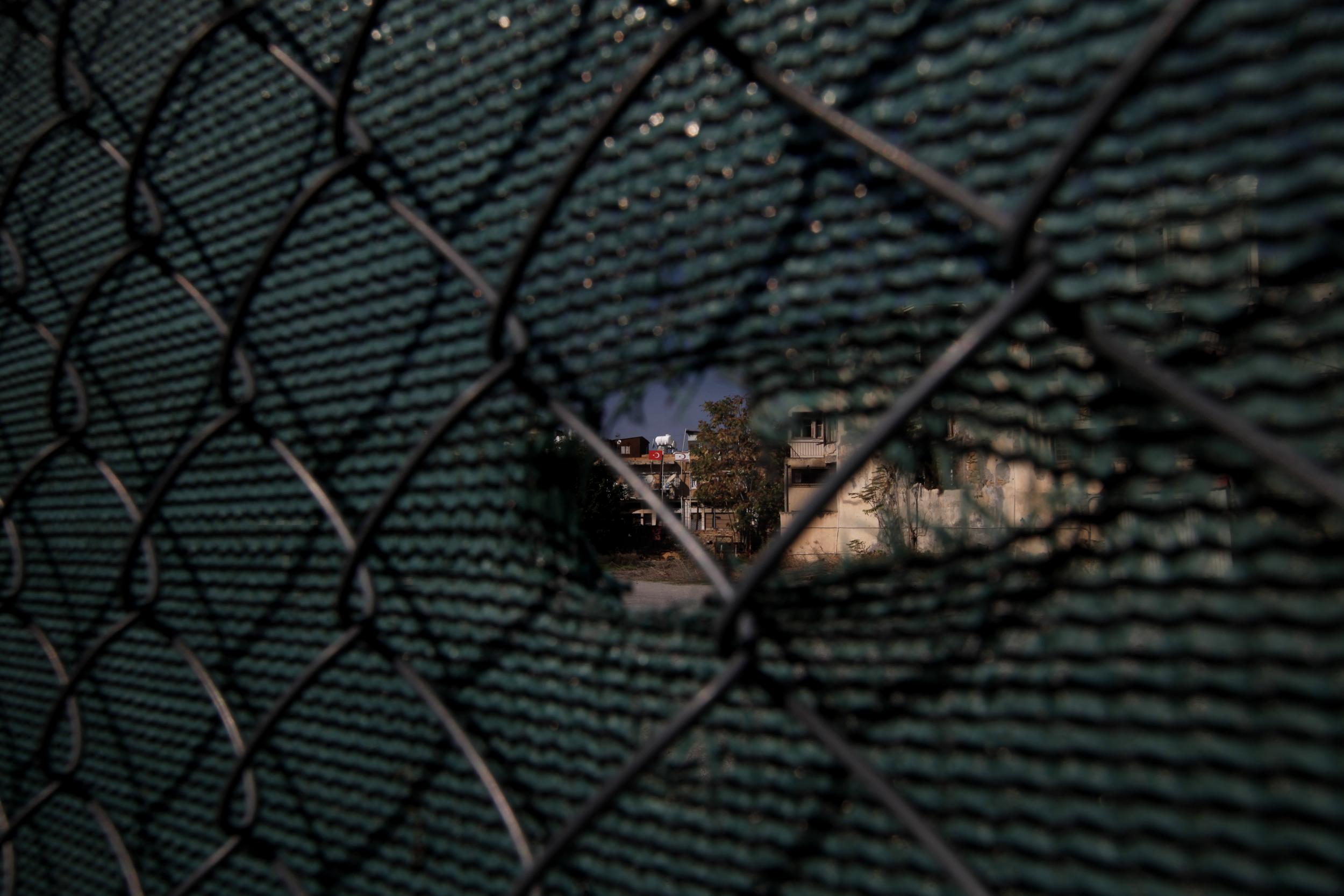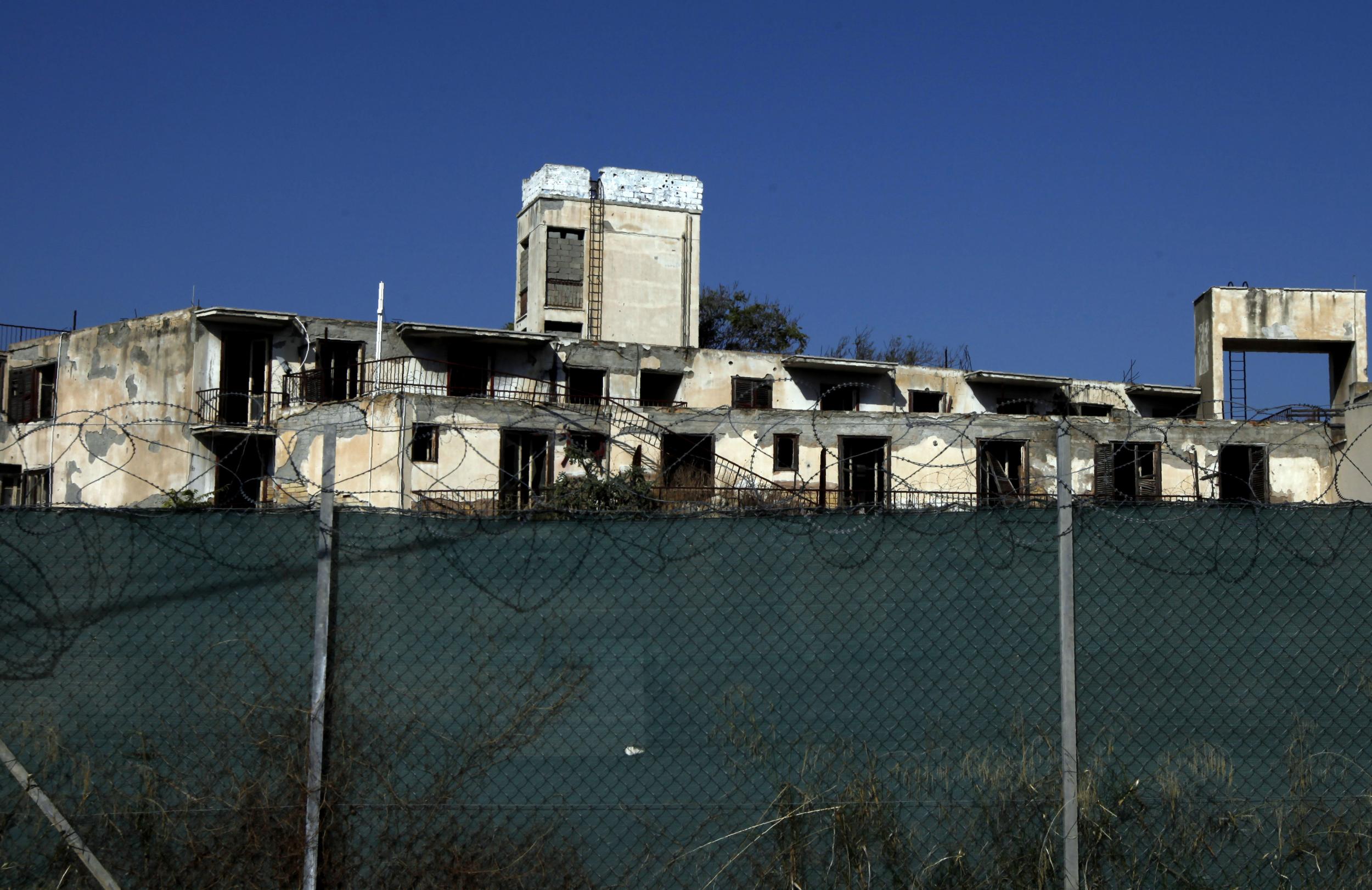Europe’s other wall: How militarised barrier continues to divide Cyprus, 30 years after Berlin’s came down
Soldiers and UN peacekeepers still patrol bitterly contested frontier which runs through central Nicosia

Thirty years after the Berlin Wall came down, the bullet-riddled sandstone walls and concrete machine gun nests dotting Cyprus‘ no man’s land are a jarring reminder that Europe still hosts the world’s last divided capital.
The bustling medieval centre of Nicosia remains cut in half by a United Nations administered buffer zone, the most visible scar from the 1974 war which split the island nation in two.
Following a coup launched by Cypriots who favoured union with Greece, Turkey invaded and established a breakaway state in Northern Cyprus.
Despite a ceasefire ending the conflict just weeks later, the final positions of the two armies remains as the so-called Green Line, which is still patrolled by soldiers on both sides.
Reminiscent of Cold War tensions, Greek Cypriot conscripts still man guard posts on the internationally-recognised southern side, opposite Turkish and Turkish Cypriot soldiers looking out from their positions on the island’s northern breakaway part.
Although Cyprus joined the European Union in 2004, only its southern part enjoys full membership benefits.
The buffer zone mostly traverses mountains and farmland along its 120 mile length, but at several points it winds through Nicosia’s narrow streets leaving the opposing soldiers just metres apart.
Inside the city, the dividing line isn’t so much a single barrier in the mould of the more famous Berlin Wall, but rather a patchwork of concrete-filled oil barrels, barbed wire-topped fences and sentry posts built up over decades.
The closest point between the two sides was for 25 years a stretch of road that UN peacekeepers had dubbed “Spear Alley”.
Only about three meters of road separated armed soldiers crouched behind the sandbagged windows of what were once stately mansions built at the turn of the previous century.
It was that proximity that gave the spot its name, as when tensions ran high opposing soldiers would attach their bayonets to sticks and jab at each other, or hurl objects ranging from Molotov cocktails to urine-filled bottles.
The death of several troops finally led to an agreement in 1989 which saw both sides pull back from the flashpoint.
Because some parts of the Green Line have been effectively uninhabited for decades, a range of wildlife has flourished, including a rare species of barn owl.
Yet just a stone’s-throw away on either side the inhabitants of Nicosia go about their ordinary lives in this bustling city.

“Our military peacekeepers play a vital role in liaising on a daily basis with the opposing forces to prevent tensions from arising and becoming international security insurgencies,” said Aleem Siddique, a spokesman for the UN peacekeeping force.
“UN police officers [also] liaise with the police authorities on both sides of the island to maintain law and order within the buffer zone. And probably most importantly, our civilian staff are the ones that help bridge the divide to bring the communities together.”
For decades, there was virtually no physical contact between north and south. That ended in 2003 when a political thaw between the sides resulted in the opening of the first of nine crossing points across the buffer zone, and there are efforts to open even more.

Despite decades of talks and negotiations, the UN has not yet been able to cobble together a reunification agreement which would finally tear down the wall and rejoin the two halves of Nicosia and Cyprus back together again.
The latest failed bid occurred in 2017 during high-level talks at a Swiss resort that also brought together the diplomats of Cyprus’ ‘guarantors’ — Greece, Turkey and Britain.
Officials have been trying to pick up the pieces from that effort and get the two sides talking again; discussions about how to re-open negotiations are scheduled to resume later this month in Berlin, shortly after that city celebrated 30 years since its own seemingly intractable division was eradicated for good.
Join our commenting forum
Join thought-provoking conversations, follow other Independent readers and see their replies
Comments
Bookmark popover
Removed from bookmarks